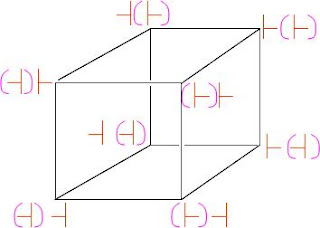How long is a piece of string? With this phrase a good friend of mine likes to describe my research to new acquaintances. This once led a prominent string theorist (who happened to be guided by my friend on a glacier trip) to pop into the department here to visit me, only to find, no doubt to his great dismay, that I wasn't actually working on string theory. Of course I eagerly told him I was working on category theory, but as this was several years ago his eyes immediately glazed over and he took the first opportunity of continuing on his holiday.
But how long
is a piece of string? String theorists say that strings are tiny, and this is why we cannot immediately see stringy effects in our surroundings. If I pick up a handful of sand from the beach, it contains lots of tiny bits of string, which in principle have a length determined by a coordinate system set up by me, the observer. But special relativity tells us that an alien spacecraft flying by the beach will determine lengths differently to me, in principle all the way down to the so-called Planck scale. Can we actually
look at stuff at this scale? Well, no. In fact, things are seen to be made of atoms at a length scale many orders of magnitude greater than this. We could look at the subatomic particles if we collided two grains of sand at roughly the speed of the alien spacecraft (let's say) and our measurements of these new particles would be imprinted on a template (perhaps water molecules, or silicon wafers) built from everyday low energy stuff from our world.
Since we lack the resources to reach the scale of the strings themselves, we can never measure their length. What type of observer
could measure their length? Given the complexity of the mere SM zoo, the recording template would have to be capable of registering
enormous quantities of information, such as that contained in galaxies, or clusters of galaxies. What does it mean to say that an observer on this scale sees a lot of strings? One would naturally guess that such an observer sees things made out of galaxies and stars, and maybe stuff that we can't see. Oh, all right, string theory
does have U duality, but I'm not aware of any papers which actually take this idea seriously since it means giving up the idea that everything is made of strings. Can anybody provide me with links?

P.S. The fact that
other (more category theoretic) approaches to unification are making contact with reality might also have something to do with my lack of enthusiasm for string theory, although stringy mathematics is nice.





















